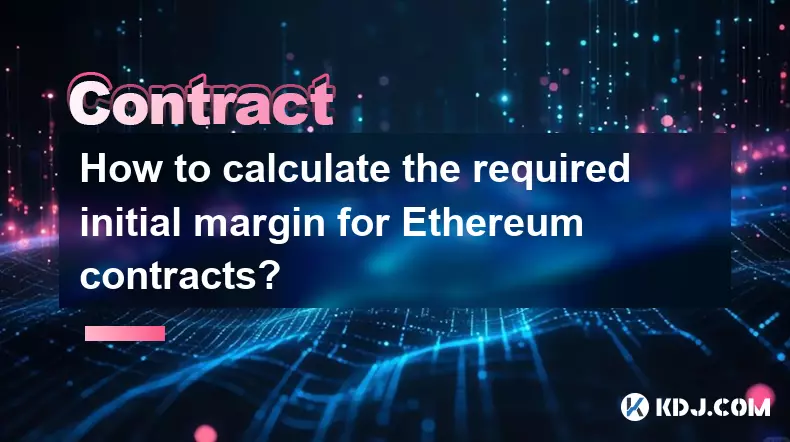-
 bitcoin
bitcoin $118548.520763 USD
3.67% -
 ethereum
ethereum $4352.564943 USD
4.79% -
 xrp
xrp $2.964058 USD
4.22% -
 tether
tether $1.000565 USD
0.05% -
 bnb
bnb $1028.372955 USD
1.46% -
 solana
solana $221.373507 USD
6.00% -
 usd-coin
usd-coin $0.999933 USD
0.02% -
 dogecoin
dogecoin $0.248633 USD
6.85% -
 tron
tron $0.341444 USD
2.38% -
 cardano
cardano $0.852946 USD
5.82% -
 hyperliquid
hyperliquid $47.869306 USD
6.15% -
 chainlink
chainlink $22.561476 USD
6.01% -
 ethena-usde
ethena-usde $1.001258 USD
0.05% -
 avalanche
avalanche $30.660000 USD
2.06% -
 stellar
stellar $0.400917 USD
9.76%
How is the index price for Bitcoin contracts calculated?
The Bitcoin index price, calculated from weighted data across major exchanges like Binance and Coinbase, ensures fair, real-time valuation for derivatives trading.
Oct 01, 2025 at 01:00 am

Understanding the Index Price in Bitcoin Derivatives
1. The index price for Bitcoin contracts is determined by aggregating data from multiple major cryptocurrency exchanges. This ensures that no single exchange's pricing anomalies distort the overall valuation. Exchanges such as Binance, Coinbase, Kraken, Bitstamp, and Huobi are typically included in this calculation.
2. Each exchange’s Bitcoin/USD or Bitcoin/USDT price is weighted based on its trading volume and reliability. Higher-volume exchanges with strong liquidity contribute more significantly to the final index value. This weighting mechanism prevents manipulation and enhances accuracy.
3. The aggregation process occurs continuously and updates every few seconds, depending on the platform. For instance, derivatives platforms like Bybit, OKX, and Binance recalculate the index price in real time to reflect current market conditions accurately.
4. Some platforms apply filters to eliminate outliers or suspicious price movements during periods of high volatility. These safeguards help maintain stability, especially during flash crashes or sudden pump-and-dump scenarios.
5. The resulting index price serves as a benchmark for marking positions, calculating unrealized profits and losses, and determining liquidation triggers. It acts as a fair representation of Bitcoin’s true market value across the global landscape.
Why Is the Index Price Critical for Contract Settlement?
1. Contract settlement relies on an objective reference point to avoid disputes between traders and platforms. The index price provides this neutrality by reflecting consensus pricing rather than relying on a single order book.
2. When funding rates are calculated in perpetual swap contracts, they are based on the difference between the mark price and the index price. A stable index ensures that funding payments remain proportional to actual market premiums or discounts.
3. Liquidations are triggered when a trader’s margin falls below maintenance levels, often assessed using the mark price, which itself is derived from the index. An accurate index reduces the risk of premature or unfair liquidations.
4. Arbitrage opportunities between spot and futures markets are evaluated against the index price. Traders use it to identify mispricings and execute strategies accordingly, contributing to market efficiency.
5. Regulatory compliance frameworks increasingly require transparent pricing mechanisms. The multi-source index model aligns with these standards by minimizing centralization risks and enhancing auditability.
Factors Influencing Index Price Accuracy
1. Exchange selection criteria directly impact reliability. Platforms prioritize exchanges with verified volumes, robust security, and consistent uptime to ensure clean data inputs.
2. Time synchronization across exchange APIs is crucial. Even minor delays can introduce discrepancies, so systems use timestamp validation to align incoming price feeds precisely.
3. Stablecoin pairs like BTC/USDT and BTC/USDC are converted into USD equivalents using trusted conversion rates. If USDT trades slightly below $1, adjustments may be applied to prevent skewed valuations.
4. During network congestion or exchange outages, fallback mechanisms activate. These might involve using historical averages or temporarily increasing weightings on operational exchanges to maintain continuity.
5. Transparency reports published by derivatives platforms detail their exact methodologies, including refresh intervals, weighting formulas, and handling of extreme events. This openness builds trust among institutional participants.
Frequently Asked Questions
What happens if one of the exchanges in the index goes offline?Platforms detect unresponsive exchanges through heartbeat monitoring. In such cases, the affected exchange is temporarily excluded from the calculation, and weights are redistributed among active sources to preserve integrity.
Can the index price be manipulated by large trades on one exchange?It is highly unlikely due to the diversified nature of the index. A single exchange’s abnormal activity is diluted by others, and volume-based weighting limits disproportionate influence from isolated spikes.
Do all crypto derivatives platforms use the same index methodology?No, each platform defines its own set of constituent exchanges, weighting rules, and filtering techniques. While most follow similar principles, slight variations exist between providers like Binance, Bybit, and Deribit.
How often is the index price updated?Updates occur every 1 to 5 seconds, depending on the platform’s infrastructure. High-frequency updates ensure minimal lag between real-world price movements and contract valuation adjustments.
Disclaimer:info@kdj.com
The information provided is not trading advice. kdj.com does not assume any responsibility for any investments made based on the information provided in this article. Cryptocurrencies are highly volatile and it is highly recommended that you invest with caution after thorough research!
If you believe that the content used on this website infringes your copyright, please contact us immediately (info@kdj.com) and we will delete it promptly.
- BlockDAG, DOGE, HYPE Sponsorship: Crypto Trends Shaping 2025
- 2025-10-01 00:25:13
- Deutsche Börse and Circle: A StableCoin Adoption Powerhouse in Europe
- 2025-10-01 00:25:13
- BlockDAG's Presale Buzz: Is It the Crypto to Watch in October 2025?
- 2025-10-01 00:30:13
- Bitcoin, Crypto, and IQ: When Genius Meets Digital Gold?
- 2025-10-01 00:30:13
- Stablecoins, American Innovation, and Wallet Tokens: The Next Frontier
- 2025-10-01 00:35:12
- NBU, Coins, and Crypto in Ukraine: A New Yorker's Take
- 2025-10-01 00:45:14
Related knowledge

What is the maintenance margin for Bitcoin contracts?
Oct 02,2025 at 01:36am
Decentralized Exchanges Gain Momentum in 20241. Decentralized exchanges (DEXs) have seen a significant rise in trading volume, surpassing centralized ...

How to calculate the required initial margin for Ethereum contracts?
Oct 01,2025 at 06:01am
Understanding Initial Margin in Ethereum Futures1. The initial margin for Ethereum futures contracts represents the minimum amount of capital a trader...

What is a perpetual swap for Bitcoin contracts?
Oct 01,2025 at 08:18am
Understanding Perpetual Swaps in Bitcoin Trading1. A perpetual swap is a type of derivative contract that allows traders to speculate on the price of ...

What is the best platform for trading SOL contracts?
Oct 01,2025 at 06:36am
Understanding the Role of Decentralized Exchanges in Modern Crypto Trading1. Decentralized exchanges (DEXs) have reshaped how traders interact with di...

How to short sell Bitcoin using futures contracts?
Oct 01,2025 at 02:54am
Understanding the Role of Decentralized Exchanges in Crypto Trading1. Decentralized exchanges (DEXs) have become a cornerstone of the cryptocurrency e...

Are PEPE contracts a good way to trade volatility?
Oct 01,2025 at 04:18am
Understanding PEPE Contracts in the Cryptocurrency Market1. PEPE contracts, derived from the broader meme coin movement, have gained attention due to ...

What is the maintenance margin for Bitcoin contracts?
Oct 02,2025 at 01:36am
Decentralized Exchanges Gain Momentum in 20241. Decentralized exchanges (DEXs) have seen a significant rise in trading volume, surpassing centralized ...

How to calculate the required initial margin for Ethereum contracts?
Oct 01,2025 at 06:01am
Understanding Initial Margin in Ethereum Futures1. The initial margin for Ethereum futures contracts represents the minimum amount of capital a trader...

What is a perpetual swap for Bitcoin contracts?
Oct 01,2025 at 08:18am
Understanding Perpetual Swaps in Bitcoin Trading1. A perpetual swap is a type of derivative contract that allows traders to speculate on the price of ...

What is the best platform for trading SOL contracts?
Oct 01,2025 at 06:36am
Understanding the Role of Decentralized Exchanges in Modern Crypto Trading1. Decentralized exchanges (DEXs) have reshaped how traders interact with di...

How to short sell Bitcoin using futures contracts?
Oct 01,2025 at 02:54am
Understanding the Role of Decentralized Exchanges in Crypto Trading1. Decentralized exchanges (DEXs) have become a cornerstone of the cryptocurrency e...

Are PEPE contracts a good way to trade volatility?
Oct 01,2025 at 04:18am
Understanding PEPE Contracts in the Cryptocurrency Market1. PEPE contracts, derived from the broader meme coin movement, have gained attention due to ...
See all articles










































































